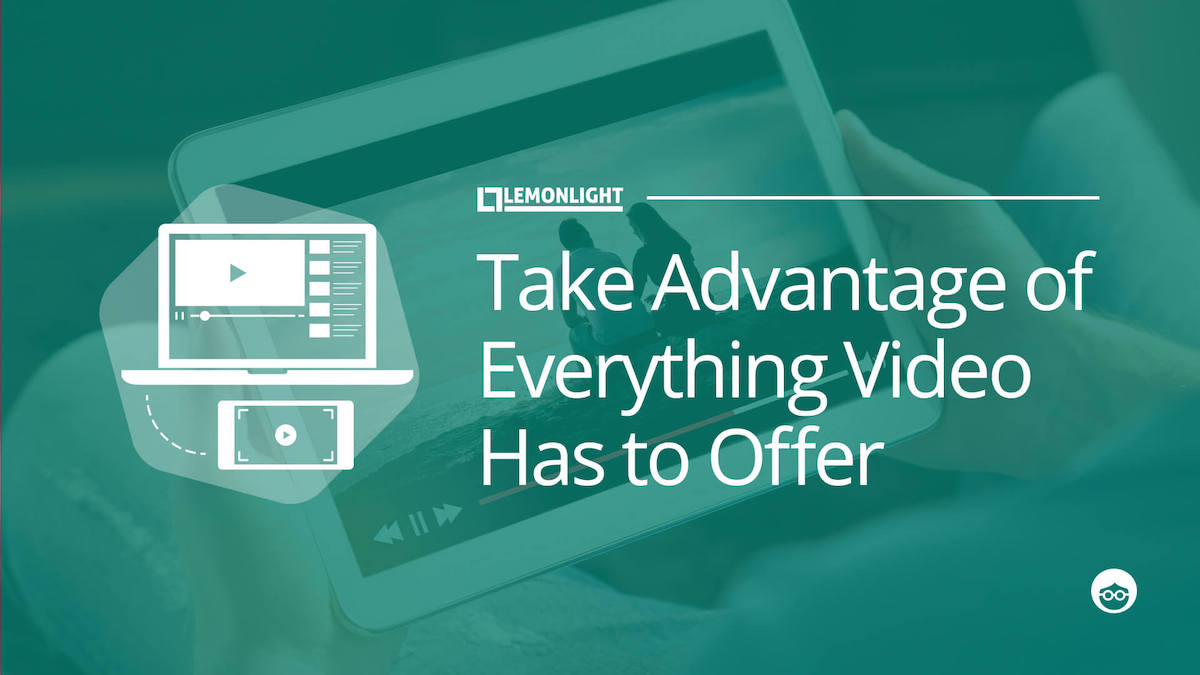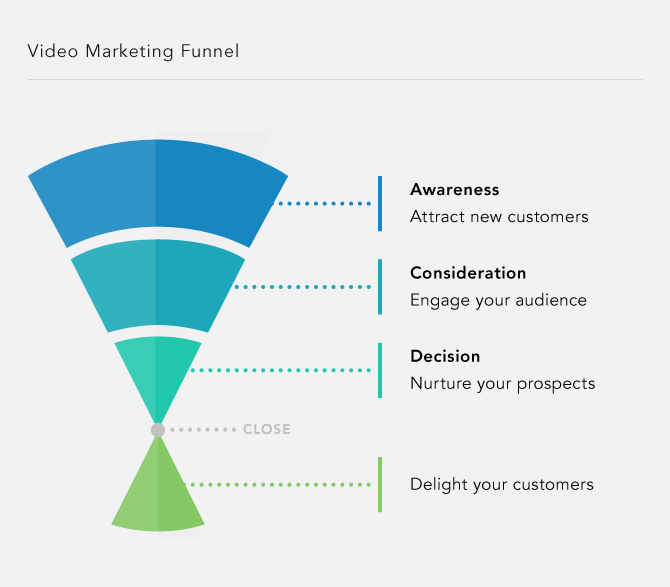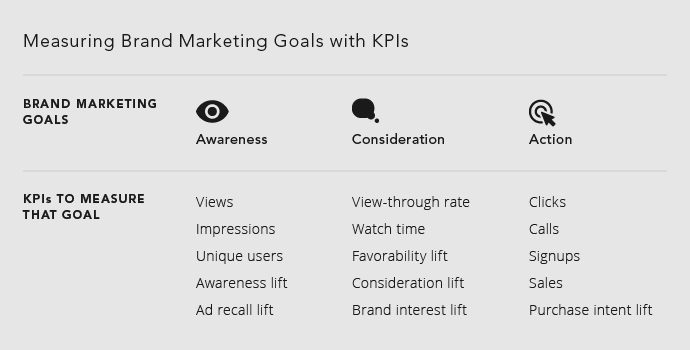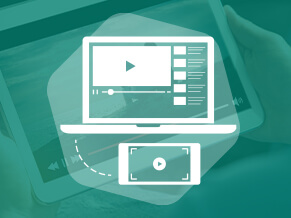How to Optimize Your Video Ad Strategy

You’ve created an amazing branded video, and can’t wait to see the results it will generate. Of course, when promoting organically, you won’t be reaching a fresh audience, but instead, the people who already follow you or have subscribed to your content.
Maybe, just maybe, you’ll reach new folks through the organic shares of your fans and followers. Although, honestly, it likely won’t get you much exposure or far in terms of generating leads and acquiring new fans to engage with your brand.
What will bring in those crucial new contacts? Paid advertising!
Don’t worry, we know spending money isn’t everyone’s favorite topic. However, spending money smartly can elevate your video’s performance and help your brand stand out from the competition.
That’s why we’re breaking down exactly what it takes to implement an effective video ad strategy and how to optimize it after you’ve launched, so you can make sure the money you’re spending is bringing in big returns.
First, figure out your video goal
Hopefully, you had a clear video goal in mind before getting started with video production. In case you didn’t, now is the time to figure out what you want your video to accomplish. Do you want it to drive leads? Do you want it to encourage engagement? Do you want to deliver greater brand awareness?

Whatever your goal, be sure to attribute it to the right stage of the buyer’s journey. Therefore, you’ll need the right metrics:
Attract a New Audience
If the goal is to attract new users, your target audience is in the awareness stage, where they’re just discovering your company and how you can potentially solve their problem(s).
Keep an eye on the following metrics to gauge the success of your video advertisement:
- Views
- Impressions
- Unique Users
- Awareness Lift
- Ad Recall Lift
Engage Your Audience
If the goal is to engage with someone who’s already had contact with your brand in one form or another, your audience is in the consideration stage – they’re aware of their problem(s) and are reading online reviews, looking for recommendations, and doing research to find the right solution.
Here are the metrics you’ll want to keep an eye on at this stage:
- View-Through Rate
- Watch Time
- Favorability Lift
- Consideration Lift
- Brand Interest Lift
Nurture Your Audience
If the goal is to nurture your audience, they’re likely in the decision-making stage and are ready (or close to ready) to commit to a purchase. Here, you’ll want to do everything in your power to convince them you are the right choice – and not your competition.
Keep on eye on the following metrics:
- Clicks
- Calls
- Signups
- Sales
- Purchase Intent Lift
Delight Past Customers
Your audience has converted, and now, your goal is to keep offering them value out of the goodness of your heart, or more likely, in order to get them to continue doing business with you. This audience is in the retention stage and keeping them delighted is now your top goal.
Here’s how to measure whether or not your video ad is working:
- Return Visits
- Repeat Purchases
- Social Interaction
- Favorability Lift

Armed with these goal-oriented metrics, you can decide which advertising platform is best for your needs.
Second, pick your desired ad platforms
You know what your video goal is and what metrics to measure. Next, comes deciding which ad platforms can help you get closer to your goal.
This can be tough to figure out since there’s no way of knowing which platform is best for every individual industry, company, and/or video goal. With so many different factors to consider, you’ll have to do a bit of research to see which platforms are best suited to your needs.
Below, we’re going to break down some top-level information about some of the biggest players in the advertising game.
Social Media Platforms
Promoting your video with paid distribution on social networks is almost required if you want to drive any results, no matter what your goal is. Sure, social is typically best for raising brand awareness, but some channels have amazing lead generation and lead capture tools that make running ads more than worth it financially.
Here are a few social tips:
- Facebook has the largest audience of any network, making its audience targeting options incredibly robust.
- Instagram is owned by Facebook, so the ad platform UI is the same, but the audience here skews younger and they are more visually attentive.
- LinkedIn is best for B2B audiences and is a haven for professionals as well as high-level decision makers.
- YouTube is where people go to watch a video – make sure you know your target audience’s browsing behavior and keep your video ads here short.
- Twitter’s analytics aren’t as full-fledged as other networks – use this channel only if you’re certain your target audience uses it.
- Pinterest is highly visual but isn’t renowned for its ability to get users to actually click on ads – use this primarily for brand awareness.
Native Platforms
Using native ad platforms like Outbrain might be your best bet when it comes to running video ads. Thanks to its amazing wealth of user behavioral data and the ability to target specific websites and industries with your video, your ad is more likely to get in front of the right audience.
Browse what the provider has to offer – whether you know the exact websites you want to target or simply audience interests, Outbrain aims to show your content to an audience that would find it the most interesting, and therefore, be more likely to engage.
Third, plan your targeting and budget
Picking the precise audience and dollar amount to spend is tough. The biggest piece of advice we can give is not to put all your eggs in one basket. Run budgets on various networks and see which drives the best results.
It can take up to eight touch points to actually drive a viable lead, so you want to make sure your audience is seeing you in as many places as possible.
The best way to do that? Target them everywhere they spend their time. Use social, search, native ads, and more, prioritizing the platforms that lead to the highest return. If your audience is most active on Instagram, and you’ve seen your highest ad engagement rates there, then that’s probably the best place to start.
As far as budget goes, we can’t really tell you the exact dollar amount to spend, but we do want to reframe the way you think about it. Instead of thinking about how much you should spend, think about how much you’ll get in return.
Just like any other form of online advertising, if your video advertising is generating a positive ROI, then the budget doesn’t really matter. That’s right – the budget doesn’t matter. The only thing that matters is for every $1 you spend, you receive at least $1 or more in returned value.
It’s tough to think about every ad this way, especially since some video goals have more to do with engagement than leads or sales. But every customer you attract has the potential to drive a certain value, so do your best to quantify each interaction and then spend accordingly.
Once you’ve got your platform targeting and budget all worked out, it’s time to move on to the fun stuff!
Fourth, launch your ads
This step is pretty straightforward. You’ve done all the work and research in planning your ads, now, all you have to do it set them live!
Make sure you’re tracking all necessary data before and after the launch of your video ad so you can accurately measure its performance afterward.
Finally, optimize for better performance
Optimizing your ads after they’ve launched is the toughest step of all. There are so many factors that can affect the performance of your video ad; it’s tough to know which, singularly or in combination, are having the biggest impact on your bottom line.
But we do have an idea of the biggest culprits. If your video performance needs a boost, take a look at the following factors first.
- Advertising Channels – Did you pick the right channels to advertise on? A tool like Outbrain could have produced better results, but not if you neglected it entirely.
- Audience Targeting – Two major issues can occur here: you can pick an audience that’s way too broad, rendering your video ineffective or one that’s way too narrow, meaning not enough people actually saw your ad.
- Budget – Similarly, maybe your budget was too small and your ad wasn’t shown to enough people to actually drive meaningful results. Or maybe you overspent and experienced diminishing returns.
- Video Content – An hour-long webinar isn’t likely to be very successful on a platform like Facebook or Twitter. Be sure your video content fits the user experience of the platform it’s being advertised on.
- Headlines and Descriptions – Every video ad has some form of text that accompanies it. If that text isn’t attention-grabbing, users are more likely to scroll past your video.
Make these adjustments to your video one at a time and see what kind of difference it makes. Editing ad copy is lower hanging fruit and can be done more easily than, say, re-editing your entire video.
Unless you’re certain one of the more labor-intensive adjustments is at fault, start with the simpler variables and work your way up to the more difficult.
Conclusion
Developing a high-quality video you can use to promote your brand is the first major hurdle when it comes to video advertising. If you’ve already got that, creating and optimizing your video ad strategy, while hard, is well worth the effort it takes for results it can yield.
Audiences are not only receptive to video content; they actually expect companies like yours to use video when you communicate with them. So don’t leave them hanging!
Start launching your video ads and take advantage of everything video has to offer.












